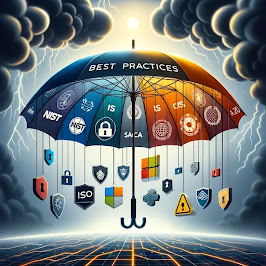COMPLIANCE MONITORING AND TESTING
In the realm of compliance, maintaining vigilant oversight is crucial to ensure adherence to relevant regulations, laws, policies, and procedures. This oversight is crucial in specific areas and roles, as it helps us achieve our objectives.
Compliance monitoring play unique and integral roles in this oversight process.
In my role as a GRC analyst, I specialize in ensuring that food companies meet essential safety and nutrition labeling regulations. This involves rigorous compliance testing against standards set by the Canadian Food Inspection Agency (CFIA), particularly for agricultural products.
My key focus is verifying the accuracy of nutrient values on food labels through detailed laboratory analysis. This process is not just about meeting standards; it's about implementing a science-based system in Canada for reliable nutrient information.
I conduct thorough evaluations of nutrient amounts declared on nutrition Facts tables, comparing them against laboratory findings to ensure they meet established standards.
This includes a comprehensive risk assessment and compliance testing based on a statistically significant sample, addressing both nutrient variability and methodological differences in food analysis. The goal is to ensure accurate labeling for the industry and trustworthy information for consumers.
Additionally, as part of ongoing compliance monitoring, I utilize key risk indicators (KRIs) and key performance indicators (KPIs) to maintain continuous oversight. This is vital in various settings, including cloud-based organizations where aligning with standards like ISO/IEC 27001 is crucial. Automated tools help monitor server configurations and encryption standards, ensuring immediate identification of deviations.
challenge of adapting to regulatory changes in food safety and labeling:
Food safety and nutrition labeling regulations can change frequently, requiring the company to continuously update its practices and procedures to remain compliant. Keeping up with these changes, especially in different jurisdictions like Canada, can be challenging.
Whenever there are regulatory changes, we perform a thorough risk assessment and impact analysis to understand how these changes affect current operations and what modifications are needed.
Regular reporting on compliance, including training adherence and escalation needs, is shared with stakeholders, highlighting the significance of risk awareness and management.
This comprehensive approach ensures both producers and consumers are safeguarded by stringent, science-backed compliance practices.
Reference: https://www.linkedin.com/in/ocynthia/








